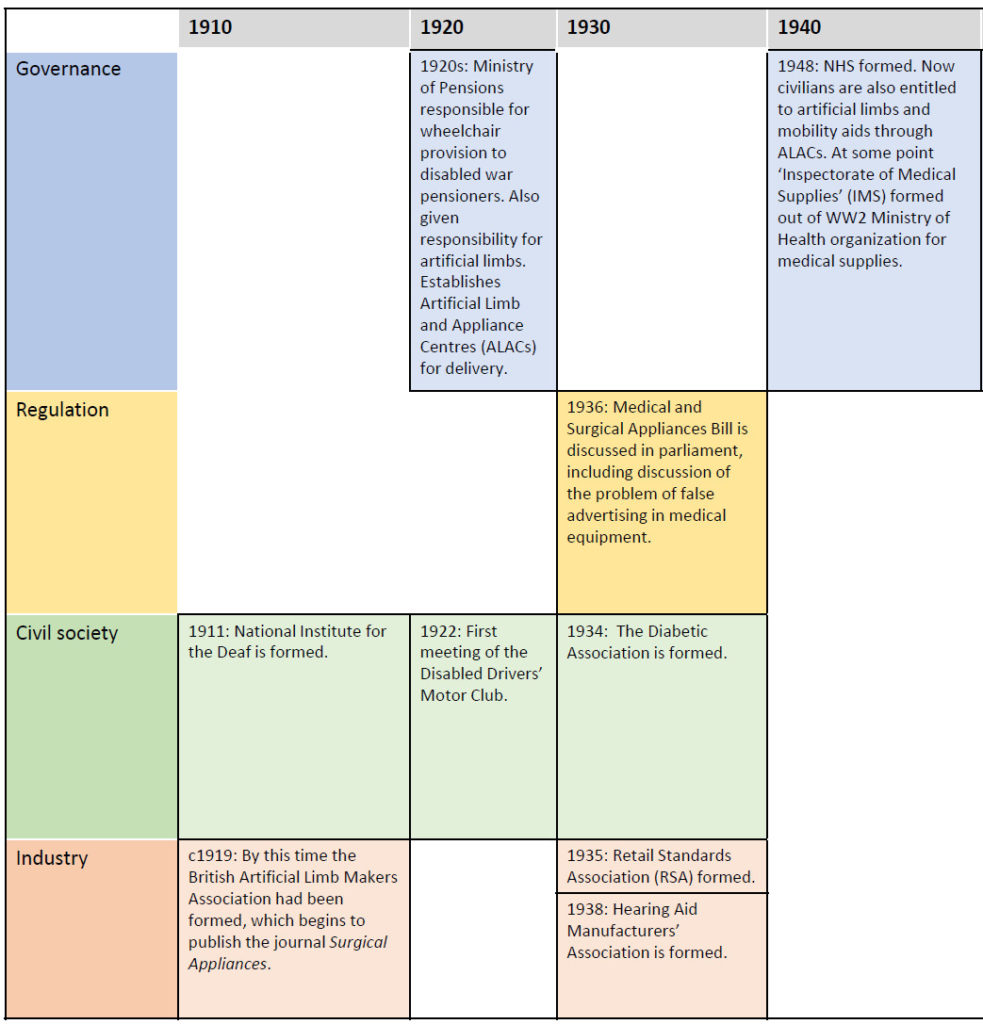This post offers a short update on the historical work our project is pursuing; particularly concerning a timeline resource which some of you may be kind enough to help with.
Briefly though I would like to flag that our project is still recruiting those living with attached or implanted devices and prosthetics, to participate in an ongoing series of interviews. Please get in touch if you are interested, more details here: https://blog.bham.ac.uk/everydaycyborgs/get-involved/
Making a chronicle
A key difficulty when making a history of something which has had few, if any, histories already written of it, is that you first have to find the things which that history might be about. The net can be cast very wide. Along the way, justifications for what things to include or exclude have to be made. The hope is that at the end, some kind of overall picture might present itself. This last part also implicates audiences, because a picture can only be produced once you have certain people in mind who might either want or need to learn from it.
For the most part, the audience is usually other historians who have expressed a direct interest in the topic, or whose stated interests ought to implicate the topic, even though it has not yet occurred to them. But obviously nobody has to write with one and only one audience in mind. For instance, I created a large resource detailing companies that have operated in the medical device marketplace in the UK and Ireland since roughly 1970. Thus far, the only people who have written to ask for a copy of this resource have been engineers and representatives of companies. What does their interest tell us about the making of this history? Or what questions might their interest spark? Does it tilt me toward business history? Does it offer routes to potential interview participants? Potential archives? Maybe nothing. But the point is to be thinking about audiences.
Speaking of which! I am hoping that you, dear reader, might be able to help further influence the audiences I have in mind, by suggesting additions to my current condensed timeline. In a separate file I have a much longer timeline full of more bits and pieces, but the resource I am working on right now – and which you can download from this post – is intended to narrow that down to just key elements; the kind of elements that someone with a general interest in the development of medical devices and their governance, in the UK and Ireland, might want to learn or have to hand. You can download the current version here: DOWNLOAD PDF

So what have I missed? What would you like to see included? I will be very grateful for any suggestions you might care to make. The only constraints that I have to work within concern the size of the PDF. My intention is to create something which people can either download or get printed into a booklet, and the current size of the file fits the template for a three-folded 210mm x 210mm leaflet. So I won’t be able to add everything, which means more hard choices will be coming down the road!
What I have avoided
I have not created a list of arguably significant medical devices and the years in which they were developed or released. This is the kind of resource that industry associations, or departments for innovation, or engineering schools, sometimes like to make. Whilst these sorts of lists have their utility for particular purposes, that kind of chronicle is not what we are aiming at in this project. It is also the kind of resource that, as I say, is already pretty easy to find.
I have also avoided picking out some central technologies and filling in a timeline around them. This is consistent with a key choice for my overall historical agenda, which is to bring into focus the field of medical device development as a whole, rather than pick out examples. Quite a few histories of individual medical technologies have already been written, and while these are exceptionally valuable (and I have ransacked a few to add points on the timeline), I am not intending to create a history that adds to their number. The aim is to try and create a more synthetic history from the multitude of devices.
Other than that, I don’t think I am strategically excluding anything else, and I hope the 4 categories of Governance, Regulation, Civil Society, and Industry, create a potential home for most any candidate addition you might send to me. I think these categories are relatively straightforward. Paralleling them with each other achieves two aims. First, to recognise that many different kinds of actor takes an interest in the world of medical technology. Second, to make it is easier to remember many layers of history developing at once. But perhaps I am missing a fifth essential category! I look forward to finding out.
You can write to Dominic on d.berry[at]bham.ac.uk
